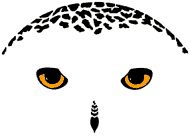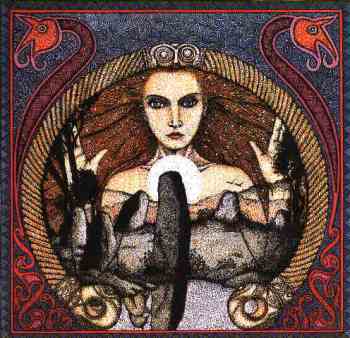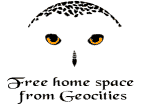

Morrigan (Morrigu)

Copyright © 1996, 1997 Danielle Ní Dhighe
All Rights Reserved
May be reposted as long as the above attribution and copyright notice are retained
The Morrigan is a goddess of battle, strife, and fertility. Her name translates as either "Great Queen" or "Phantom Queen," and both epithets are entirely appropriate for her. The Morrigan appears as both a single goddess and a trio of goddesses. The other deities who form the trio are Badb ("Crow"), and either Macha (also connotes "Crow") or Nemain ("Frenzy"). The Morrigan frequently appears in the ornithological guise of a hooded crow. She is one of the Tuatha Dé Danann ("Tribe of the goddess Danu") and she helped defeat the Firbolg at the First Battle of Mag Tuireadh and the Fomorians at the Second Battle of Mag Tuireadh.
Origin
The origins of the Morrigan seem to reach directly back to the megalithic cult of the
Mothers. The Mothers (Matrones, Idises, Disir, etc.) usually appeared as triple goddesses
and their cult was expressed through both battle ecstasy and regenerative ecstasy. It's
also interesting to note that later Celtic goddesses of sovereignty, such as the trio of
Eriu, Banba, and Fotla, also appear as a trio of female deities who use magic in warfare.
"Influence in the sphere of warfare, but by means of magic and incantation rather
than through physical strength, is common to these beings." (Ross 205)
Eriu, a goddess connected to the land in a fashion reminiscent of the Mothers, could appear as a beautiful woman or as a crow, as could the Morrigan. The Disir appeared in similar guises. In addition to being battle goddesses, they are significantly associated with fate as well as birth in many cases, along with appearing before a death or to escort the deceased.
There is certainly evidence that the concept of a raven goddess of battle was not limited to the Irish Celts. An inscription found in France which reads Cathubodva, 'Battle Raven', shows that a similar concept was at work among the Gaulish Celts.
Similarities between the Morrigan and the Valkyries
The Morrigan's role in the Irish cosmology is quite similar to the role played by the
Valkyries in Norse cosmology. Both use magic to cast fetters on warriors and choose who
will die.
During the Second Battle, the Morrigan "said she would go and destroy Indech son of De Domnann and 'deprive him of the blood of his heart and the kidneys of his valor', and she gave two handfuls of that blood to the hosts. When Indech later appeared in the battle, he was already doomed." (Rees 36)
Compare this to the Washer at the Ford, another guise of the Morrigan. The Washer is usually to be found washing the clothes of men about to die in battle. In effect, she is choosing who will die.
An early German spell found in Merseburg mentions the Indisi, who decided the fortunes of war and the fates of warriors. The Scandinavian "Song of the Spear", quoted in "Njals Saga", gives a detailed description of Valkyries as women weaving on a grisly loom, with severed heads for weights, arrows for shuttles, and entrails for the warp. As they worked, they exulted at the loss of life that would take place. "All is sinister now to see, a cloud of blood moves over the sky, the air is red with the blood of men, and the battle women chant their song." (Davidson 94)
An Old English poem, "Exodus", refers to ravens as choosers of the slain. In all these sources, ravens, choosing of the slain, casting fetters, and female beings are linked.
"As the Norse and English sources show them to us, the walkurjas are figures of awe an even terror, who delight in the deaths of men. As battlefield scavengers, they are very close to the ravens, who are described as waelceasega, "picking over the dead"..." (Our Troth)
"The function of the goddess [the Morrigan] here, it may be noted, is not to attack the hero [Cu Chulainn] with weapons but to render him helpless at a crucial point in the battle, like the valkyries who cast 'fetters' upon warriors ... thus both in Irish and Scandinavian literature we have a conception of female beings associated with battle, both fierce and erotic." (Davidson 97, 100)
SOURCES
Any questions or comments about this site
-- just click on the envelope in Bluey's hands and he'll deliver your message

©all orginal material copyright: The Inward Jouney, 1986-1998